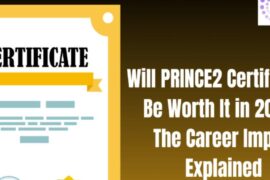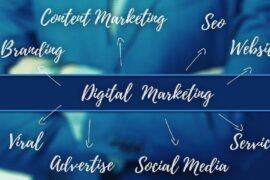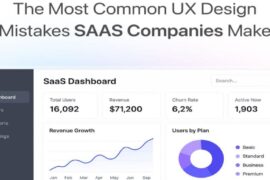Video Marketing in 2025: Formats That Drive Results
Video marketing is one of the most effective ways for businesses to reach people online – it drives results, plain and simple. Over 89% of businesses are already using video to explain what they do, show their products, or build trust with potential customers.
And the demand keeps growing. People are watching more, reading less, and skipping anything that doesn’t grab them fast. If your content isn’t quick, clear, and visually engaging, it’s probably getting ignored.
But not all videos are created equally. You need to know which formats actually work, where to use them, and how to make sure they support your business goals.
This guide breaks it all down, what’s working in 2025, what’s changed, and how to build a video strategy that gets results.
Video Marketing Breakdown
Video marketing is a way to promote products or services without the traditional marketing fall-off. It’s captivating, way easier to process, and has a much longer retention time than any other medium. It’s how companies can explain their true value, tell their story, garner trust, and connect with customers – all in under a few minutes (and on a wide range of marketing and sales channels).
A sincere customer testimonial sharing their experience, a short explainer making quick work of complexities, or a product video that digs deep into user painpoints and objections can all do way more heavy lifting than written overviews on web pages, lengthy demo calls, or traditional ads and whitepapers. Over 90% of marketers say video yields a positive ROI.
(And it doesn’t hurt that you can use it across your sales and marketing funnel – in ads, on socials, on landing pages, in emails, in proposals – you name it.)
As information inundation increases and attention spans decrease, content trends are shifting more and more toward short-form and visual-first formats. Video continues to be one of the most effective tools for brands looking to stand out in a sea of information.
Video marketing doesn’t have to be complicated. But it does need to be intentional.
The Benefits of Video Marketing 2025
Boosts Conversions
When people understand what you’re offering, they’re much more likely to take the next step. A short video, such as a product demo or explainer, helps make things click for your audience. It turns “just browsing” into real action. Some businesses have seen their conversion rates increase by up to 80% just by placing a video on their landing page. That’s huge.
Improves Visibility and SEO
Search engines look for signals that your content is worth showing to others. And video is a content favorite. When you add video to your website, it can improve your rankings, keep people on your page longer, and increase the chances that someone clicks on your result. All of that gives you a better shot at getting found online. Plus, YouTube is the second-biggest search engine, so if you’re not using video, you’re missing visibility.
Increases Retention
People tend to forget what they read. But they remember what they watched. Studies show that viewers retain around 95 percent of a message when it’s delivered through video, compared to only 10 percent through text. That makes video a powerful tool for staying top-of-mind, especially if you’re trying to teach, explain, or persuade.
Builds Trust Fast
Trust is one of the most foundational factors in buying decisions, and it’s also the hardest to earn with marketing. Video is more than just information; it’s connection. Seeing someone speak, hearing their voice, or watching a real customer share their experience feels personal and highly relatable. It shows that your brand is made up of real people, not just words on a screen. And in a world full of noise and hype, that kind of authenticity cuts through.
Works Around the Clock
Video content doesn’t stop working once you publish it. It keeps going, day and night. Whether someone watches your video at 2 PM or 2 AM, it’s always delivering your message, walking them through the process, or answering their questions. That kind of always-on support makes video one of the most efficient tools in your marketing strategy.
Fits The Current Way Of Doing Business
Your audience is very likely doing their own research way before they get to your sales calls or purchase page. Potential buyers want to read reviews, do comparisons, and deep dive available information before narrowing down options. Video answers questions, handles objections, and highlights value in a quick and captivating way.
Core Types of Marketing Videos
Not all videos do the same job. Some are built to explain. Some are designed to sell. Others are there just to keep your brand top of mind. The key is knowing which video format matches your marketing goals.
1. Explainer Videos
Explainer videos break down what your product or service does. Fast.
Explainers usually show up on homepages, landing pages, or right after someone signs up. The goal is to help people understand your value right away so they don’t bounce.
They often follow a simple structure: problem, solution, how it works, next step. Great for SaaS, tech tools, or anything complex.
2. Product Demonstration Videos
This is where you show the goods.
Product demos highlight how your product works in the real world. That might be an app walkthrough, a hands-on unboxing, or a feature spotlight; these videos help people imagine what it’s like to use what you’re offering.
That lowers hesitation and builds confidence before purchase.
3. Customer Testimonial Videos
People trust people. That’s what makes testimonials so powerful.
These videos feature real customers sharing their experiences with your brand. When done right, they don’t feel scripted; they feel honest.
A strong testimonial touches on the customer’s challenge, your solution, and the outcome. And it does it in a way that future customers can relate to.
4. Brand Story Videos
This is where you tell people who you are and why you exist.
Brand story videos go beyond what you sell. They focus on your mission, values, and the people behind the scenes. You’ll often see these on “About” pages, in investor decks, or featured in ad campaigns when the goal is brand awareness.
They help your audience connect with you on a more emotional level.
5. User-Generated Content (UGC)
UGC is gold because it’s not you saying you’re great, it’s your customers.
These are videos created by your actual users: reviews, how-to clips, before-and-after shots, or just someone talking about your product on social media.
Sharing UGC builds credibility. It also creates a sense of community, which helps more people buy in.
6. Social Media Videos
Short. Snappy. Easy to share.
Social media videos are built for speed and attention. You’ll usually find them on TikTok, Instagram Reels, YouTube Shorts, or LinkedIn.
They’re great for tips, teasers, behind-the-scenes moments, and product highlights. The best ones are designed to be watched without sound, with captions that pull you in.
7. Animated Videos
Sometimes, you need visuals that real footage just can’t provide.
Animated videos are great for showing abstract ideas, extreme product design details, walking through data, or simplifying a complicated process. They work especially well for industries like finance, manufacturing, insurance, or B2B tech.
They help your message land when it’s not easy to show in real life.
8. Promotional Videos
Promos are direct. They tell people about a sale, a limited-time offer, a launch, or a specific event, and why they should act now.
These videos are usually short and built for conversion. Think fast pacing, clear value, and a strong call to action. They’re especially useful during campaigns or seasonal pushes.
How to Create a Video Marketing Strategy That Actually Works
If you want your content to work, you need a clear plan. Keep it simple, get the basics right, and stay consistent.
1. Know Your Goals Before You Hit Record
Every marketing video needs a purpose. Are you trying to raise brand awareness? Drive sign-ups? Sell a product? The type of video you create and where you place it depend entirely on the outcome you want.
Tip: Awareness videos perform best on top-of-funnel platforms like YouTube, Instagram, and TikTok, while how-to videos and testimonials work well at the middle or bottom of the funnel.
2. Define Your Audience and Message
Not every video is for everyone. A video you want to create for first-time viewers should look and sound very different from one targeting returning customers. Take the time to identify:
- Who are you talking to
- What they need
- How your video can help
Once you’ve got that, craft a single, clear message that speaks directly to them.
3. Use High-Quality Visuals and Audio
You don’t need a $20k camera setup, but you do need clean footage, clear sound, and strong lighting. High-quality video doesn’t just look good; it builds trust. People associate polished visuals with professionalism and reliability.
And yes, vertical video formats are not only accepted now they’re expected on most platforms.
4. Make Sound Optional (But Captions Mandatory)
Roughly 85% of users watch social videos on mute. That’s why your marketing video needs to communicate clearly without relying on audio. Use on-screen text, captions, and visual storytelling to keep viewers engaged even in silent mode.
5. Hook Fast, You Have 3 Seconds (Maybe Less)
The average viewer gives you just a few seconds to prove you’re worth watching. The beginning of your video should include:
- A strong visual hook
- A reason to care
- Immediate context
This is especially crucial for short-form video and social media platforms, where attention spans are even shorter.
6. Include a Strong CTA (Every Time)
Whether it’s “Shop Now,” “Book a Demo,” or “Watch the Full Video,” make sure viewers know exactly what to do next. A compelling video content strategy always includes a CTA, even if it’s just to follow or engage.
7. Repurpose and Distribute with Intention
Once you’ve created a killer video, don’t just post it once and forget it. Upload it to a video hosting platform, embed it in emails, slice it up for stories or reels, and run it in ad campaigns.
The video you create should work across multiple channel, and that’s how you get the most ROI from your video production efforts.
Video Marketing Statistics You Should Know
Recent research from Wyzowl shows that 96% of marketers agree video has boosted brand awareness, while 84% say it delivered real increases in sales. That proves video isn’t just a fluffy trend; it’s a direct driver of results.
When it comes to traffic, 82% of video marketers report more website visits thanks to publishing video content. In other words, videos don’t just entertain, they act as powerful magnet tools that pull people in and keep them engaged.
Engagement stats are equally impressive. Viewers retain up to 95% of what they see in a video, compared to only 10% of what they read. If you want your message to stick, video is the way to go.
Mobile and short-form content have also reshaped viewing habits. Around 73% of consumers prefer watching short videos under a minute to learn about products, and 66% of video marketers rank short-form content as the most engaging format. That shows quick, punchy hits of information still outperform long-form content in today’s digital landscape.
As we covered above, video outperforms most formats for ROI 93% of marketers report a positive return from video marketing, and around 83% say video offers better ROI than most other formats. That’s high praise, and not just from a few voices, but from nearly everyone using video.
How to Choose the Right Video Format for Your Business Goals
Not every video works for every goal. That’s why one of the smartest things you can do is match the type of video to what you’re trying to achieve.
Here’s a quick way to think about it:
If your goal is brand awareness:
Use:
– Social media clips
– Short-form videos
– Brand story videos
– UGC
Why: They’re quick, scroll-stopping, and easy to share.
If your goal is education or clarity:
Use:
– Explainer videos
– Animated walkthroughs
– How-to tutorials
– Educational content
Why: These break down complex ideas without overwhelming people.
If your goal is trust and credibility:
Use:
– Testimonial videos
– Behind-the-scenes clips
– Case studies
– Culture videos
Why: Real people build real trust.
If your goal is conversions or sales:
Use:
– Product demos
– Promotional videos
– Interactive/shoppable content
– Launch videos
Why: They show the benefits and give viewers a reason to act.
Need a fast cheat sheet? Use this table to match format to your goal. (BONUS)
| Format Type | Best Use Case | Where to Use It |
| Explainer Videos | Education, lead generation | Homepages, landing pages, email campaigns |
| Product Demo Videos | Sales enablement, user onboarding | Product pages, sales funnels, social ads |
| Customer Testimonials | Social proof, building trust | Website, case study pages, pitch decks |
| Brand Story Videos | Awareness, emotional connection | About pages, investor decks, YouTube channel |
| User-Generated Content | Community building, credibility | Social media, product pages, and email highlights |
| Social Media Videos | Fast attention, engagement | TikTok, Instagram Reels, YouTube Shorts |
| Animated Explainers | Simplifying complex ideas | Blog posts, landing pages, and B2B service pages |
| Promotional Videos | Driving sales or limited-time offers | Ads, product launches, seasonal campaigns |
Video Content Best Practices
Creating a good video isn’t just about having the right gear or editing skills. What matters most is how well your content connects with your audience.
Start with the Viewer – Don’t make the video about you. Make it about what your viewer needs or wants to know. If they don’t feel like it’s for them in the first five seconds, they’re gone.
Keep It Short and Focused – Most people won’t watch a long intro or a slow explanation. Keep things moving. Stick to one clear message per video, especially on social platforms where attention drops fast.
Design for the Platform – A video that works on YouTube might flop on TikTok. Always create with the platform in mind. For Instagram and TikTok, use vertical video and add captions. For LinkedIn, keep it polished and professional. And if it’s going on your website, make sure it loads fast and fits the layout.
Prioritize Visual Clarity – Make sure everything looks and sounds good, without going overboard. Natural light, clean audio, and simple framing can go a long way. You don’t need a big production budget. You just need a video that feels clear and intentional.
Always include a Call to Action – Even a 15-second video should have a goal. Doesn’t matter if it’s “Watch more,” “Visit the site,” or “Buy now,” tell people what to do next. A clear CTA helps turn views into results.
Consider a Professional Video Production Company – Video is complex. From first concept to final cut, there are a lot of steps to get a polished video that packs a punch. Leaning on professional experience, the reach and resources of an established company, a streamlined process, and the quick work of extra assets and edits can significantly increase ROI and end up saving time, money (and a giant headache).
Test, Learn, and Repurpose – Post it, watch how it performs, then adjust. Try different thumbnails, formats, and lengths. And don’t be afraid to slice up one good video into multiple shorter clips. Great content is reusable content.
The best-performing videos are built with real people in mind, how they watch, where they scroll, and what keeps them interested.
Why Video Marketing Still Wins in 2025
Video marketing in 2025 isn’t about chasing trends; it’s about understanding what works, why it works, and how to use it to meet your goals. The formats may shift, and the platforms will keep evolving, but video remains one of the most effective tools for getting your message across.
If your goal is to build brand awareness, explain a product, or turn viewers into customers, video helps you do it faster and better.
So if you’re updating your marketing game this year, start with video. Keep it simple, useful, and made for the people you want to reach.































